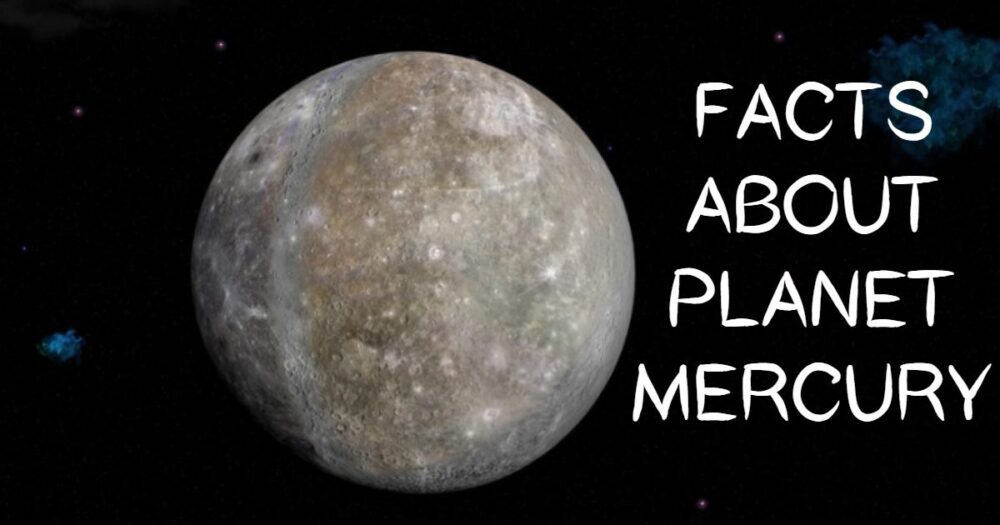Introduction
Each one of us has,at least for once, dreamt of visiting the eight planets of our solar system. While we may not be able to physically visit the planets, we can read about them and get an idea of what they are like. We would want to start from the beginning, that is, from the first planet- Mercury.
Let’s dive deep and see what Mercury holds for us.
1. Mercury doesn’t have any natural satellite
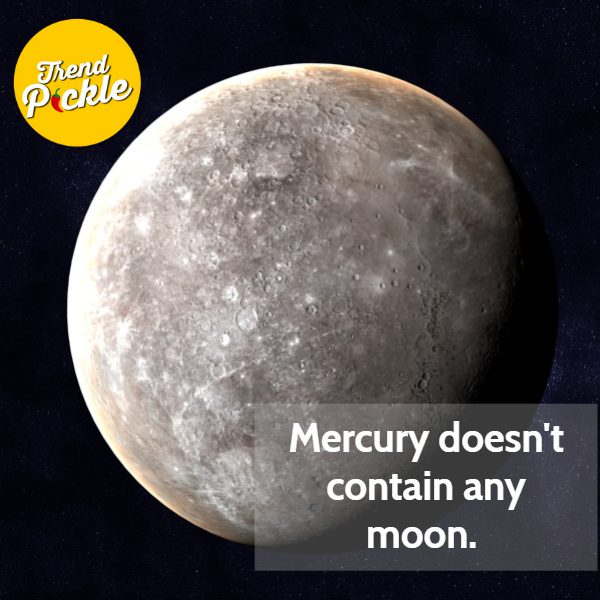
Mercury doesn’t contain a moon. There are interesting theories behind the absence of a natural satellite around the moon.
One theory states that every moon on any planet was formed with the same material as that of the planet. In case of mercury, the entire material was used up in creating Mercury itself. Hence, there was no residual matter and hence mercury has no moon.
2. Mercury is shrinking
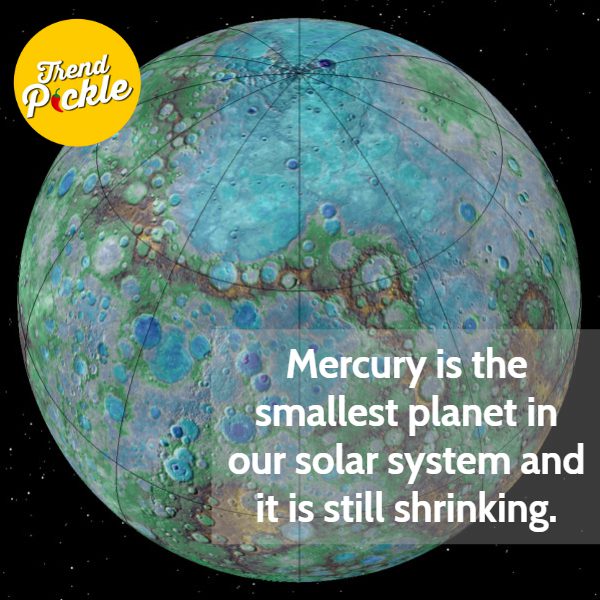
Mercury is the smallest planet in our solar system and it is still shrinking. This is because mercury has a huge iron core. This iron core has cooled down and has been contracting for 4.5 billion years. This has resulted in the pulling of the surface inward and hence the planet’s shrinking size.
3. Orbit
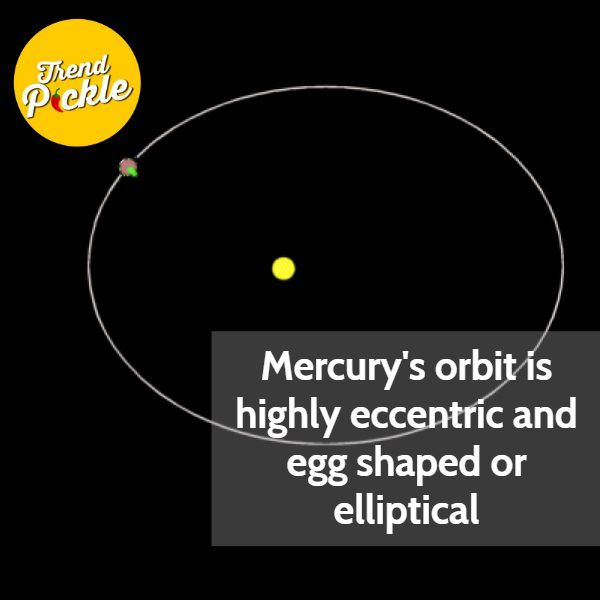
Mercury’s orbit is highly eccentric and egg shaped or elliptical. This is because of its smallest size and closeness to the sun. Mercury’s orbit is included at 7° from the earth’s ecliptic. It revolves around the sun in just 88 days. So, mercury contains only 88 days in a year. The eccentric orbit of Mercury has also helped scientists in proving Einstein’s theory of relativity. Cool, isn’t it?
4. Presence of water
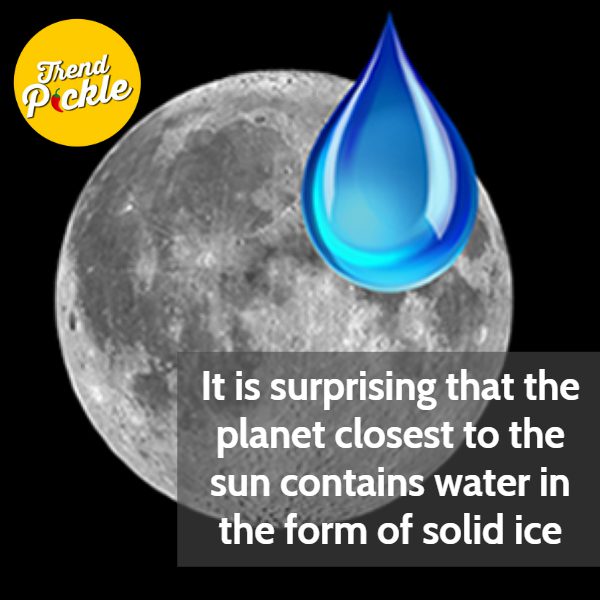
It is surprising that the planet closest to the sun contains water in the form of solid ice. But this water deposit is always shaded away from the sun and no liquid form of water is available. The presence of water has a variable degree of cooling effect on Mercury. That’s why Mercury is not the hottest planet in the solar system, venus is.
5. Fragment of mercury on earth
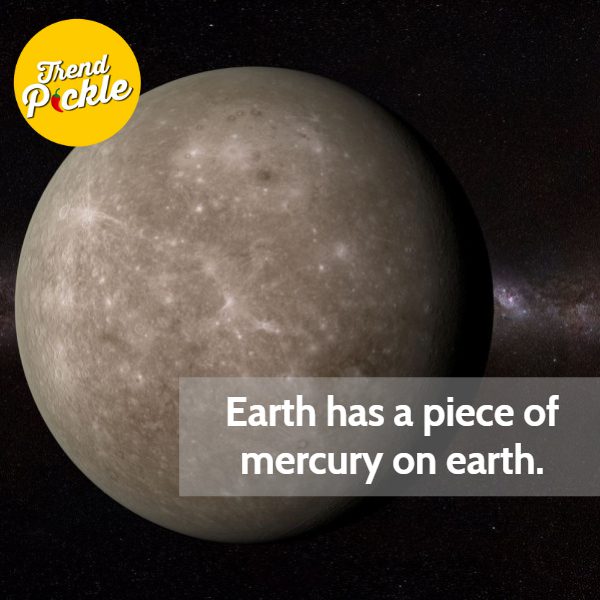
Yes! Earth has a piece of mercury on earth. It is present in the form of a green meteorite and is believed to have landed on earth when a collision hit Mercury and sent flying pieces off into space. Mercury is the least known planet and having a piece here on earth makes it really interesting.
6. Calorie Basin
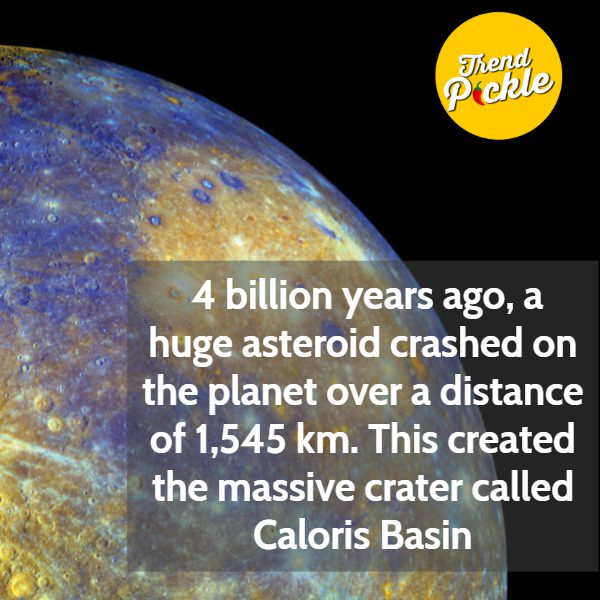
Mercury is quite an explosive planet. Collisions keep happening all the time. 4 billion years ago, a huge asteroid crashed on the planet over a distance of 1,545 km. This created the massive crater called Caloris Basin. This crater is large enough to fit the entire Western Europe! This crater also contains nine overlapping volcano vents, which also makes it a compound volcano.
7. Life on Mercury
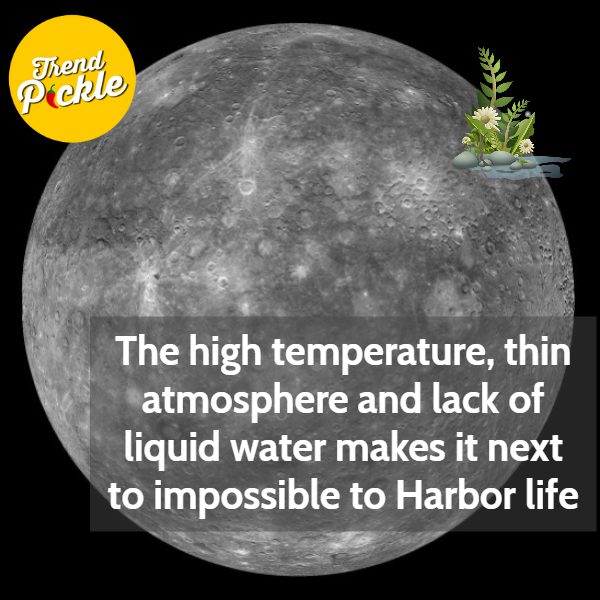
Mercury is not exactly habitable for most of the organisms. The high temperature, thin atmosphere and lack of liquid water makes it next to impossible to Harbor life. However, certain microorganisms like thermophilic bacteria and other primitive viruses can survive in the harsh conditions of the planet. But the planet cannot support higher forms of life. Thank god! Humans won’t be facing any competition from aliens any soon.
8. Naming of Mercury
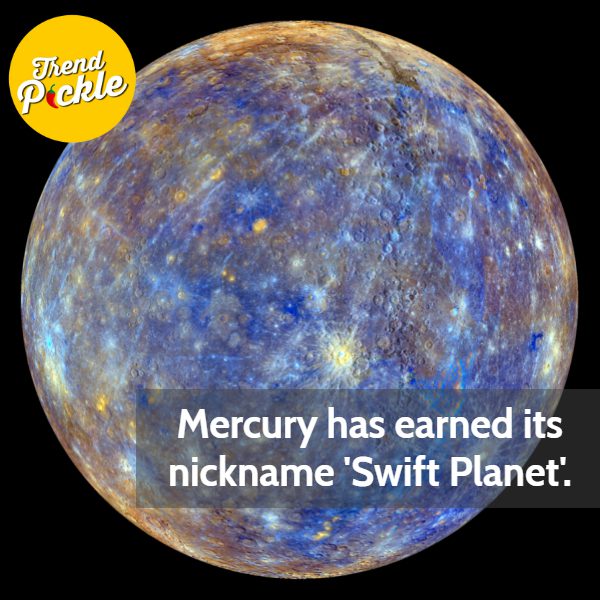
Mercury is the fastest planet in our solar system. Hence, scientists decided to name it after the Roman god of travel. The Greek equivalent is the god Hermes. Due to its fastest revolving speed, it has earned its nickname ‘Swift Planet’.
9. Gravity
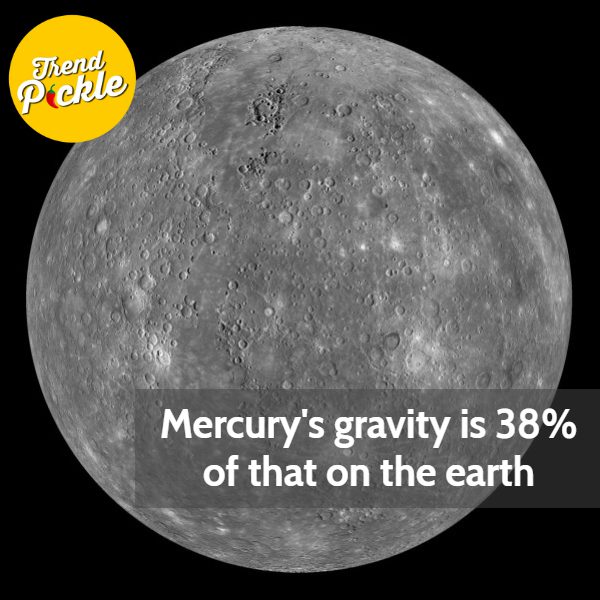
Mercury is the smallest planet but has a relatively high density. It’s gravity is 38% of that on the earth. Hence, if you weigh 100kg on earth, you will weigh only 38 kg on Mercury. I’m sure everyone would now want to travel to mercury. Who doesn’t want to feel light?
10. Temperature fluctuations
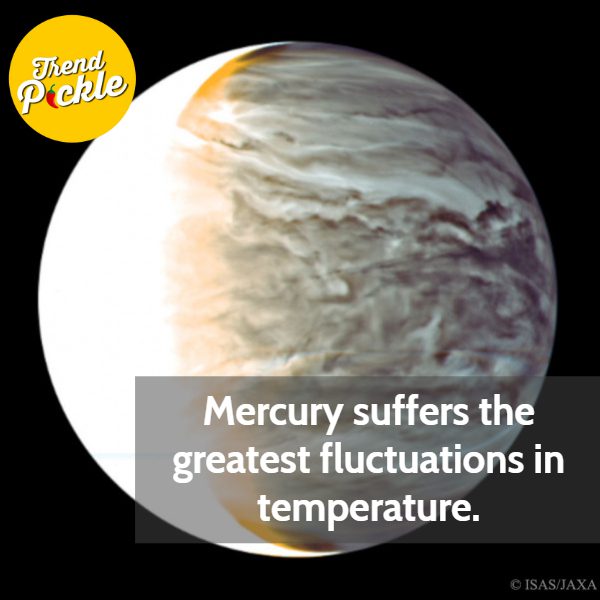
Mercury suffers the greatest fluctuations in temperature. Since it’s closest to the sun, you would always expect it to be on fire, right? But that is not the case. During daytime, the temperature can be as high as 450°C but at night, the temperature can be as low as -170°C. This means there is a difference of 600°C between the temperatures of day and night.
11. Atmosphere
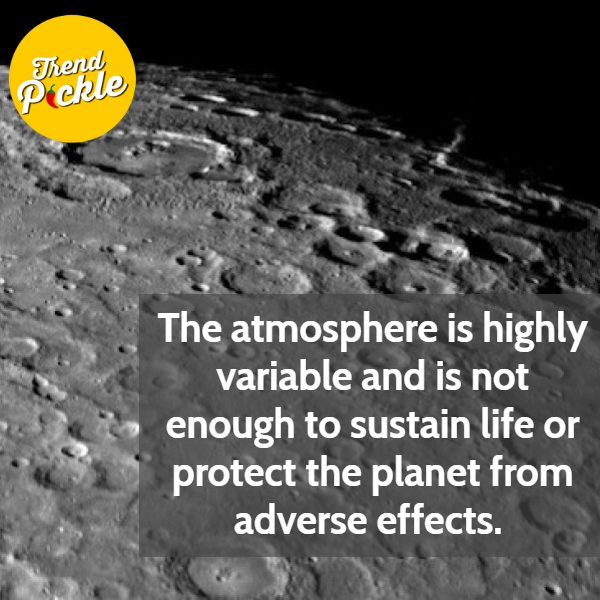
Well, Mercury has a very thin atmosphere. The atmosphere consists of elements like hydrogen, helium and oxygen. The atmosphere is highly variable and is not enough to sustain life or protect the planet from adverse effects. Since earth has a well defined atmosphere of several layers, it protects us from harmful rays of the sun and other extraterrestrial particles. But mercury doesn’t have these beneficial properties and hence cannot evidently sustain life
12. Wrinkles
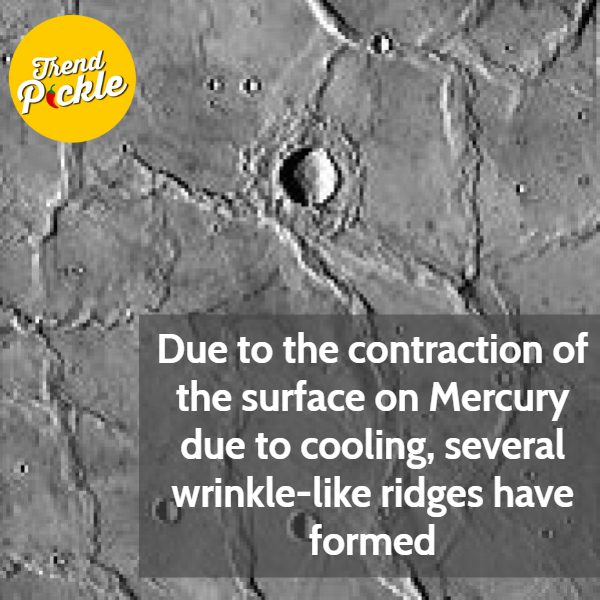
Oddly enough, Mercury contains wrinkles. Due to the contraction of the surface on Mercury due to cooling, several wrinkle-like ridges have formed. These ridges have been named lobate scarps or simply wrinkle ridges. It seems like mercury has grown old with pretty wrinkles, huh? After all, it is 4 billion years old!
13. Lack of seasons
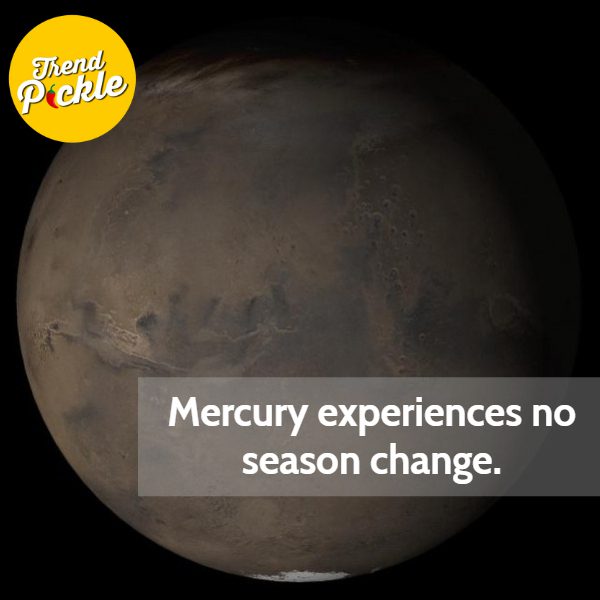
Seasons are caused due to the tikit of a planet’s axis towards or away from the sun. Mercury has a very little tilt along its axis. This tilt is inadequate to cause any significant season change. Hence, mercury experiences no season change.
14. Presence of tails
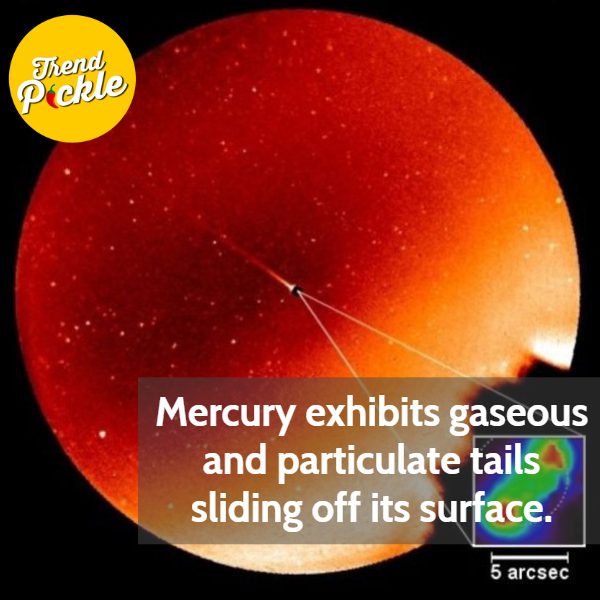
Mercury exhibits gaseous and particulate tails sliding off its surface. These tails are believed to be due to the planet’s magnetic field and the sun’s wind. However, the exact cause behind the formation of tails is yet to be discovered.
15. Research
Mercury is the least known planet of our solar system. Because of its proximity to the sun, it is impossible to conduct a manned mission to the planet. However, in 2011, NASA’s MESSENGER probe was successfully able to map the entire surface of mercury. Scientists are yet to find the questions to a trail of pending questions that could unlock several mysteries of the space.
Conclusion
Mercury might be the smallest but it is also the most mystic planet of our solar system. Scientists have been able to provide only a limited amount of information about the planet and a lot yet remains to be unveiled. It seems like Mercury has carefully shielded its secrets from the prying eye of the universe.

